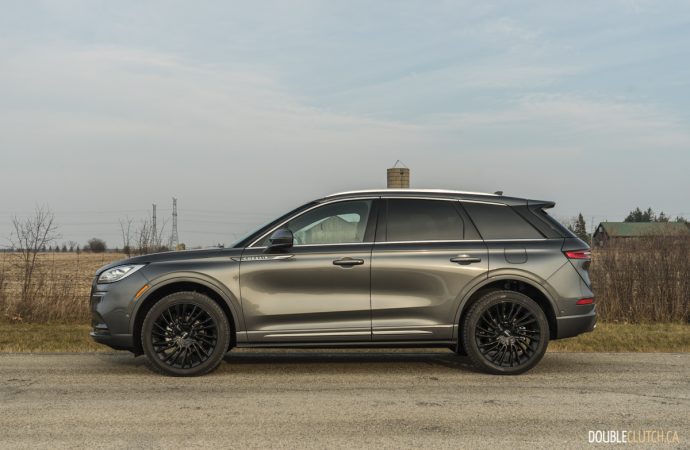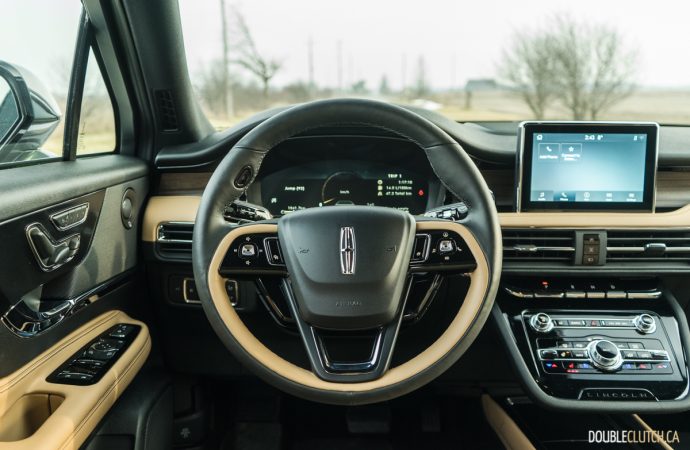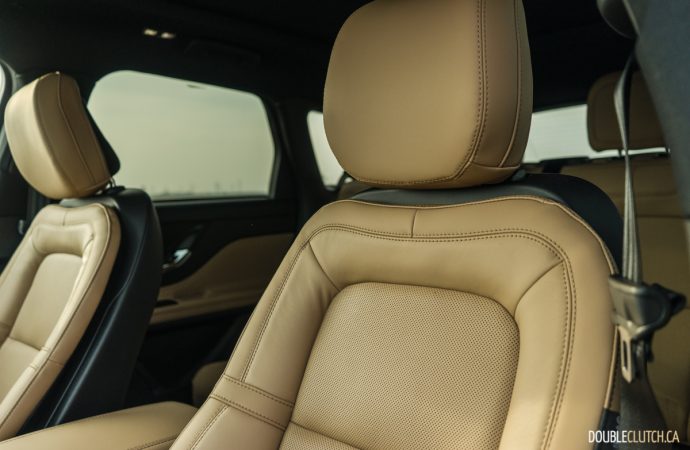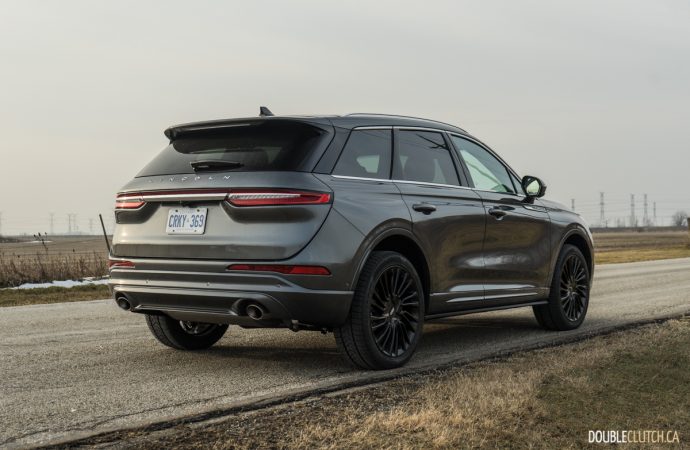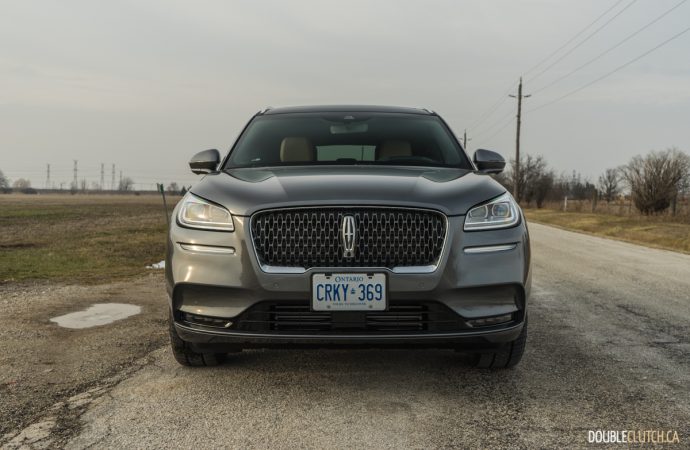Just over a decade ago, the famed Lincoln brand switched from using actual names to three-digit alphabet soup, with models like the Zephyr being renamed the “MKZ”. In recent years the brand has been making its return to luxury, reminding North Americans what the Lincoln name once stood for. New entries like the Aviator and the now-deceased Continental are actually competitive and handsome, with luxurious interiors. We jumped into a 2021 Lincoln Corsair Reserve with the 2.0-liter engine to evaluate it versus stiff competition.
The Corsair shares its platform with the latest Ford Escape, which was completely redesigned for the 2020 model year. Lincoln has done away with the MKC name, bringing in “Corsair” instead. The Corsair is a transverse-layout crossover with a front-based all-wheel-drive system. It’s fairly handsome in appearance both inside and out, and uses the latest generation of Lincoln’s trick LED lighting setup. It looks crisp and fresh, though from initial glances can look like a mid-cycle refresh of the old MKC rather than the ground-up design that it is.
The 2.0-liter turbocharged inline four-cylinder engine is carried over from last year’s MKC. It outputs 250 horsepower at 5,500RPM and 280 lb-ft. of torque at 3,000RPM. This is the standard engine on the Corsair, and the only option not equipped on our tester was the 2.3-liter powerplant with 295 horses on tap. The engine is mated to a wonderfully smooth eight-speed automatic transmission that shifts quietly and goes about its business without any fuss.
Acceleration from the 2.0-liter is more than just fine, and it helps that the Corsair is a little bit lighter than its predecessor. 100km/h comes on from a dig in just over six seconds, and the little crossover is well within its class. Throttle response is linear and the turbocharger lag isn’t all that noticeable. But it’s not its quickness that really impresses – this little Lincoln is impeccably smooth and quiet. The suspension is well sorted and absorbs road imperfections with ease – our tester’s adaptive dampers keep ride quality right at the top of its segment.
Inside the cabin, it’s extremely quiet as well. The Corsair is one of the quietest vehicles in its class, and notably quieter than many vehicles that are substantially more expensive. The laminated glass keeps acoustics as good as they can be in the segment, and is perfectly complimented by the Revel audio system.
The Corsair’s interior is absolutely class leading. Our tester was equipped with a gorgeous two-tone Ebony and Cashew colour scheme, and with matte wood accents the combination looked stunning. The center console has some piano black plastic that looks fine, but will definitely be prone to dust, scratches, and fingerprints. Space up front is quite good, and rear accommodations are also quite generous, with the Corsair having more usable space than the Audi Q5. Cargo capacity is 793-liters with the rear seats in place, which is just shy of the Acura RDX.
It’s all digital in the Corsair’s cabin too, and this somehow doesn’t take away from the feeling of traditional luxury that Lincoln is going for. The instrument cluster is a 12.3-inch digital setup, but could definitely use some additional customization – there’s a ton of wasted space here. The 24-way Perfect Position seats are fairly comfortable with multiple massage settings, but could use some additional lower back support. Both my road trip buddy and I experienced lower back pain after a couple of hours.
The physical buttons for major controls are excellent, and the system is quite easy to use. The infotainment system is easy to use, and supports both Apple CarPlay and Android Auto. There’s a wireless charging pad, but both smartphone setups require a wired connection. The native Ford infotainment is a bit dated, and we anticipate the system that has just made its debut on the new F-150 will trickle down over time. Lincoln’s Co-Pilot360 Plus system includes everything expected in the latest driver assist suites including blind spot detection, lane keeping assist, adaptive cruise control and more.
Fuel efficiency is rated at 11.1L/100km in the city and 8.1L/100km on the highway, for a combined 9.8L/100km. After roughly 1,500 kilometers of driving into the depths of northern Ontario cottage country, we observed 9.5L/100km in almost exclusively highway driving. This is with 20-inch winter tires and sub-zero temperatures, but was still a touch worse than we would have expected with the 8.1L/100km highway rating. The Corsair only requires 87-octane fuel with the 2.0-liter engine, which is a bonus in this segment.
The Corsair starts at $42,700, with pricing for our top-trim Reserve starting at $48,500. Our tester packed the Equipment Group 201A package, adding ventilated and massaging seats, heated steering wheel, 360-degree camera, Co-Pilot360 Plus, adaptive cruise control, and active park assist. It also added the adaptive suspension ($1,250), 20-inch black wheels ($2,250), and Perfect Position 24-way seats ($1,500). The final bit is a $3,500 Technology Package that adds a heads-up display, wireless charging pad, and allows users to use their phone as a key. The total as-tested price came to $63,800.
At this price point, there are quite a few players that compete with the Corsair. The BMW X3, Mercedes-Benz GLC 300 and Audi Q5 come to mind, but can get more expensive very easily once the option packages are checked off. The Acura RDX is probably the closest competitor, and other than the atrocious infotainment, it’s one of the runaway choices in its segment. The Corsair wins on overall smoothness and driving comfort, something empty nesters who do a lot of road tripping will really come to appreciate.
In a vacuum, the 2021 Lincoln Corsair Reserve is a legitimately wonderful road trip vehicle. It has impeccable road manners and the choice of two responsive powertrains. Lincoln has been working very hard to make their comeback and make the brand relevant once again, and with competitive entries like this, there’s no doubt in my mind that they will be successful in this endeavour.

